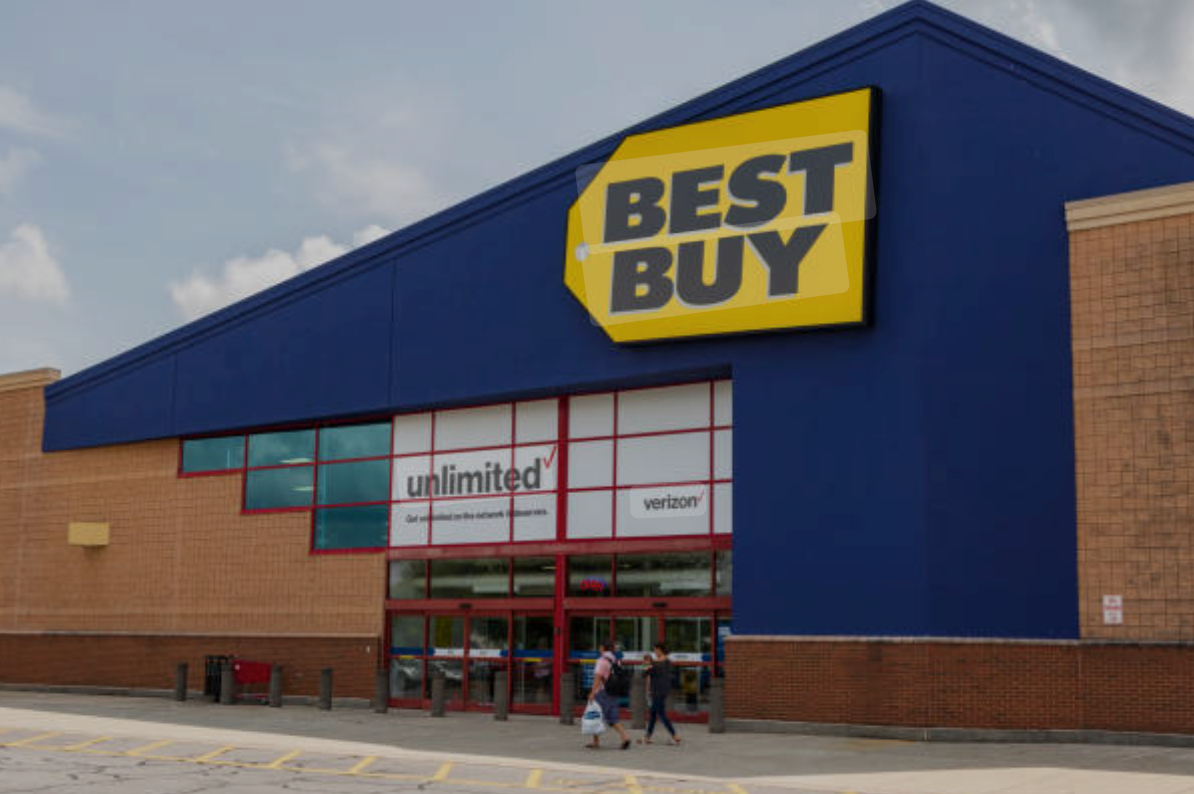Estimated reading time: 6 minutes
Best Buy Q2 FY2026 Earnings: Revenue and EPS Beat, Tariff Concerns Persist
August 28, 2025
Executive Summary
Best Buy Co., Inc. (NYSE:BBY) reported its Q2 FY2026 earnings on August 28, 2025, demonstrating strength in technology innovation and omni-channel experience. The company achieved ✔ $9.44 billion revenue, exceeding estimates of $9.24 billion, and ✔ $1.28 adjusted EPS, surpassing expectations of $1.21. Comparable sales grew 1.6% YoY, driven by gaming, computing, and mobile phone sales.
However, tariff impacts pose risks to pricing and margins, while a ✘ 36% YoY net income decline to $186 million reflects cost pressures and weak appliance sales.
Stock analysis underscores Best Buy’s technology innovation and omni-channel experience, tempered by tariff impacts and profitability challenges.
Summary of Beats, Misses, and Forward Guidance
| Metric | Actual | Expectation | Outcome |
|---|---|---|---|
| Q2 Revenue | $9.44 billion | $9.24 billion | ✔ Beat |
| Q2 Adjusted EPS | $1.28 | $1.21 | ✔ Beat |
| Q2 Net Income | $186 million | $291 million (prior year) | ✘ Miss |
| Comparable Sales Growth | 1.6% | 0.5% | ✔ Beat |
| Online Sales Growth | 5.1% | 3.0% | ✔ Beat |
1. Q2 FY2026 Financial Performance
Best Buy’s Q2 FY2026 earnings reflect resilience in a competitive retail landscape:
- Total Revenue: ✔ $9.44 billion, up 1.6% YoY, beating estimates of $9.24 billion, driven by strong computing and gaming sales.
- Adjusted EPS: ✔ $1.28, up from $1.22 YoY, surpassing expectations of $1.21 due to cost efficiencies.
- Net Income: ✘ $186 million, down 36% YoY, impacted by restructuring costs and tariff pressures.
- Comparable Sales: ✔ 1.6% growth, exceeding estimates of 0.5%, led by gaming, computing, and mobile phones.
- Online Sales: ✔ Up 5.1% YoY, contributing significantly to revenue, reflecting strength in omni-channel experience.
- Gross Margin: Slightly pressured due to growth in lower-margin gaming and computing categories.
2. Growth Drivers for Technology Innovation
Best Buy’s technology innovation and omni-channel experience drive its performance:
- AI-Enabled Devices: Strong demand for AI-powered laptops and tablets, boosting computing sales.
- Omni-Channel Strategy: Enhanced online and in-store experiences, with 5.1% online sales growth and trained staff for tech products.
- Expanded Offerings: New marketplace platform broadens product assortment, increasing customer engagement.
- Strategic Partnerships: Collaborations with mobile carriers enhance in-store mobile phone sales and customer trust.
Technology innovation and omni-channel experience fuel Best Buy’s competitive edge.
3. Valuation and Market Reaction
Best Buy’s stock gained modestly post-earnings:
- Market Reaction: Shares rose ✔ 2.51%, reflecting optimism over revenue and EPS beats.
- Valuation: Forward P/E of ~12x, attractive for value investors, though tempered by tariff impacts.
- Market Cap: Approximately $14.3 billion, reinforcing Best Buy’s position in consumer electronics.
4. Tariff Impacts
Best Buy faces challenges from tariff impacts and other headwinds:
- Tariff Pressures: ✘ Increased costs from tariffs on key sourcing regions, likely raising prices in coming quarters.
- Category Weakness: ✘ Significant decline in appliance sales due to a sluggish housing market.
- Margin Pressure: ✘ Shift to lower-margin categories like gaming and computing impacts profitability.
5. FY2026 Forward Guidance
Best Buy’s FY2026 outlook reflects cautious optimism:
- Adjusted EPS: Reaffirmed at ✔ $6.15–$6.30, trending toward the higher end, supported by sales momentum.
- Comparable Sales: Expected at 0%–2% growth for Q3, driven by seasonal demand.
- Operating Income Rate: Projected at ~3.7% for Q3, balancing investments and cost pressures.
- Dividend: $0.95 quarterly dividend, signaling confidence in cash flow stability.
Best Buy’s guidance reflects technology innovation amid tariff impacts.
6. Competitive Landscape for Stock Analysis
Best Buy operates in a competitive consumer electronics market:
- E-commerce Giants: ✘ Online retailers challenge with broader assortments and faster delivery.
- Specialty Retail: ✘ Brand-specific stores compete in mobile and computing categories.
- Advantage: Omni-channel experience and curated tech offerings provide a competitive edge.
7. Risks and Challenges for Investors
Key risks impacting Best Buy’s performance include:
- Tariff Impacts: ✘ Rising product costs could reduce demand or squeeze margins.
- Economic Uncertainty: ✘ Weak consumer spending may limit discretionary purchases.
- Category Declines: ✘ Weakness in appliances risks offsetting gains in computing and gaming.
- Competition: ✘ Online retail growth threatens market share in key categories.
- Supply Chain Costs: ✘ Tariff-driven increases may raise sourcing expenses.
Investors must balance Best Buy’s technology innovation with tariff impacts and competitive risks.
8. Industry Impact of Best Buy’s Performance
Best Buy influences technology innovation and retail trends:
- Omni-Channel Model: Strong online and in-store integration sets a standard for consumer electronics retail.
- Tech Product Focus: Demand for AI-enabled devices drives industry adoption of innovative products.
9. Guidance to Investors
Q2 FY2026 earnings present opportunities with caution:
- Value Investors: ✔ Consider BBY for its ~12x P/E and strong dividend yield, but monitor tariff impacts.
- Risk-Averse Investors: ✔ Diversify with stable retailers to mitigate ✘ tariff risks.
- Opportunistic Investors: ✔ Capitalize on dips, given the ✔ 2.51% stock gain, but expect ✘ tariff-driven volatility.
- Hedging Strategies: ✔ Use protective puts to manage ✘ stock volatility amid trade tensions.
- Tech Trends: ✔ Track computing sales, as AI-driven products drive growth potential.
- Tariff Monitoring: ✘ Evaluate trade policies, as tariffs could impact pricing and demand.
Balance Best Buy’s technology innovation and omni-channel experience with tariff impacts.
10. Conclusion
Best Buy’s Q2 FY2026 earnings, with ✔ $9.44 billion revenue and ✔ $1.28 adjusted EPS, highlight leadership in technology innovation and omni-channel experience, driven by 1.6% comparable sales growth.
✘ Net income decline and tariff impacts underscore challenges to profitability.
Best Buy advances technology innovation, but success depends on navigating tariffs and category weaknesses.
11. Disclaimer
This stock analysis is for informational purposes only and does not constitute financial, investment, or legal advice. Investors should conduct due diligence and consult a financial advisor. Best Buy’s stock faces risks from tariff impacts, economic uncertainty, category weakness, competition, and supply chain cost increases, which could impact results. Past performance is not indicative of future results. Qunatical assumes no liability for losses from actions based on this analysis.
Best Buy’s ✔ revenue and EPS beats and technology innovation are offset by ✘ net income decline and tariff impacts, requiring cautious navigation for investors.









